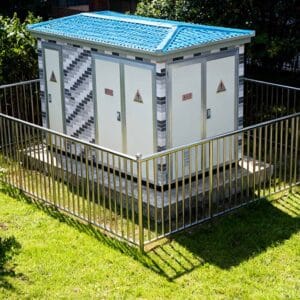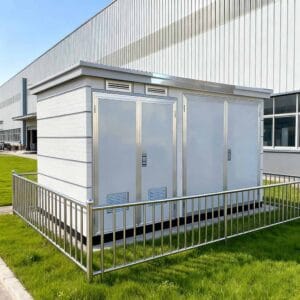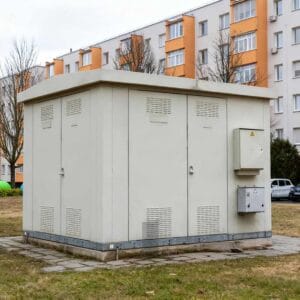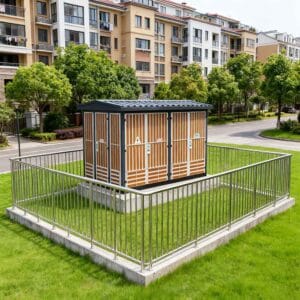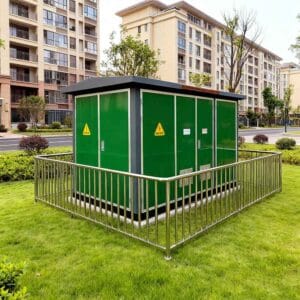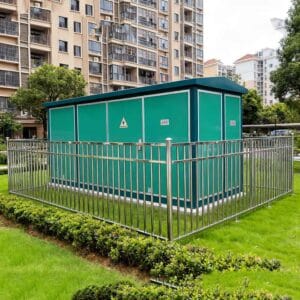Electrical Pole Transformer: Core Technology, Selection Guide & Professional Application
In the power distribution system, the electrical pole transformer (also known as the pole-mounted transformer) is a critical equipment that connects the medium-voltage power grid to the low-voltage end users. It undertakes the core task of converting high-voltage electricity (such as 10kV, 20kV) transmitted by the power grid into low-voltage electricity (220V/380V) suitable for residential, commercial and industrial use. With the acceleration of urban and rural power grid upgrading, the demand for high-efficiency, safe and durable electrical pole transformers is growing rapidly.  This article will systematically interpret its technical characteristics, scientific selection methods, installation and maintenance specifications, to provide professional references for power engineering enterprises, distribution operators and equipment purchasers.
This article will systematically interpret its technical characteristics, scientific selection methods, installation and maintenance specifications, to provide professional references for power engineering enterprises, distribution operators and equipment purchasers.
 This article will systematically interpret its technical characteristics, scientific selection methods, installation and maintenance specifications, to provide professional references for power engineering enterprises, distribution operators and equipment purchasers.
This article will systematically interpret its technical characteristics, scientific selection methods, installation and maintenance specifications, to provide professional references for power engineering enterprises, distribution operators and equipment purchasers.1. Core Technical Characteristics of Electrical Pole Transformer: Ensuring Stable Operation of Power Grid
As an outdoor-mounted power equipment, the electrical pole transformer must meet the dual requirements of “high electrical performance” and “strong environmental adaptability”. Its core technical characteristics mainly focus on the following four aspects:
1.1 Voltage Level Matching: Adapt to Diversified Power Grid Needs
The standard input voltage of electrical pole transformers is mostly compatible with the medium-voltage power grid specifications, with common grades including 10kV (the most widely used in urban and rural distribution networks) and 20kV (for new high-efficiency distribution systems). The output voltage is fixed at 0.4kV (380V three-phase/220V single-phase), which strictly conforms to the IEC 60038 standard for low-voltage power supply. For special scenarios (such as remote mountainous areas with unstable voltage), customized products with tap-changer adjustment functions can be provided to realize ±5% voltage regulation and ensure stable power supply for end users.

1.2 Low Loss Design: Conforming to Global Energy Efficiency Standards
Energy efficiency is a core indicator of modern electrical pole transformers. At present, mainstream products adopt high-quality cold-rolled silicon steel sheets (such as 30Q130 grade) for the iron core, which reduces the no-load loss by 20%-30% compared with traditional hot-rolled sheets. The winding uses oxygen-free copper wires with high conductivity, and the load loss is controlled within 1.5% of the rated capacity. Taking a 500kVA electrical pole transformer as an example, its no-load loss is ≤800W, and load loss (at 100% rated load) is ≤4800W, fully meeting the IE3 energy efficiency level specified in IEC 60076-11 and the GB/T 10228-2015 “Dry-type Power Transformers for Distribution” standard in China.
1.3 Insulation Performance: Adapting to Outdoor Harsh Environments
Since electrical pole transformers operate outdoors for a long time, insulation performance directly determines their service life. There are two main insulation structures on the market:
- Mineral oil insulation: Using high-quality naphthenic mineral oil with good heat dissipation and insulation performance, the transformer can operate continuously at a temperature rise of ≤60K. The oil tank is made of corrosion-resistant galvanized steel, and the surface is coated with anti-ultraviolet paint to resist aging in outdoor environments for 15-20 years.
- Epoxy resin dry insulation: No oil leakage risk, suitable for areas with high environmental requirements (such as residential areas, food factories). The insulation material has high mechanical strength, and can withstand temperature changes of -40℃ to 120℃, and the insulation resistance remains ≥1000MΩ under long-term operation.
1.4 Structural Reliability: Ensuring Safe Installation and Operation
The electrical pole transformer adopts a integrated design, and the key structural parts have passed strict mechanical tests:
- Mounting bracket: Made of Q235 steel, with a load-bearing capacity of ≥2 times the transformer weight, and the connection with the electric pole is fixed by hot-dip galvanized U-bolts to prevent loosening caused by wind vibration.
- Protection device: Equipped with built-in pressure relief valve (for oil-immersed type) or temperature control switch (for dry type), which can automatically cut off the power supply when the internal pressure or temperature exceeds the limit to avoid accidents.
- Terminal box: The low-voltage terminal box is designed with IP54 protection level, which can prevent rainwater and dust from entering, and the terminal is made of tinned copper, which has good conductivity and anti-oxidation performance.
2. Scientific Selection Guide for Electrical Pole Transformer: Avoiding Misselection and Waste
The selection of electrical pole transformers should be based on actual power demand, installation environment and operation conditions, and the following key points should be paid attention to:
2.1 Determine the Rated Capacity According to the Load
The rated capacity of the transformer should match the total power of the end users, and the load rate (actual load / rated capacity) should be controlled at 60%-80% to ensure efficient operation. The calculation method is as follows:
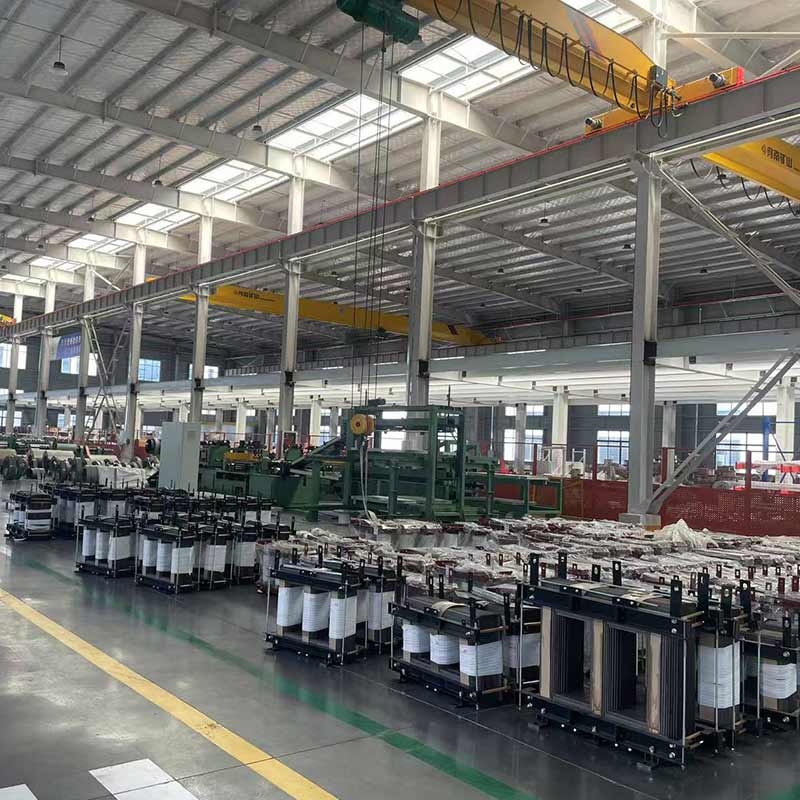
- Count the total power of all electrical equipment in the supply area (including continuous load and intermittent load).
- Convert the intermittent load into equivalent continuous load (multiply by the load factor, such as 0.7 for air conditioners, 0.5 for motors).
- Consider the future load growth (generally increase by 10%-20% as the reserve capacity).
For example, if the total continuous load in a residential area is 300kW and the intermittent load is 200kW, the equivalent continuous load is 300 + 200×0.7 = 440kW, and the recommended transformer capacity is 440÷0.7≈628kVA, so a 630kVA electrical pole transformer should be selected.
2.2 Select the Insulation Type According to the Installation Environment
- Oil-immersed type: Suitable for open outdoor environments (such as rural fields, industrial parks), with low cost and good heat dissipation, but not suitable for areas with high fire risk (such as near forests, oil depots) or strict environmental protection requirements.
- Dry type: Suitable for densely populated areas (such as urban residential quarters, commercial centers) and places with high environmental requirements (such as hospitals, chemical plants), with no oil leakage and fire risks, but the cost is 30%-50% higher than that of oil-immersed type, and the heat dissipation effect is slightly worse.
2.3 Confirm the Voltage Level and Tap Range
- The input voltage must be consistent with the voltage level of the local power grid (such as 10kV for most areas in China, 24kV for some European countries).
- For areas with large voltage fluctuations (such as remote areas), transformers with tap-changer should be selected. The common tap range is ±5% (three taps: 10.5kV, 10kV, 9.5kV), which can adjust the output voltage by changing the number of turns of the winding.
2.4 Pay Attention to the Protection Level and Auxiliary Functions
- The protection level of the transformer (IP rating) should be selected according to the environmental conditions: IP54 for general outdoor environments, IP65 for areas with heavy rain or dust.
- For intelligent power grids, optional functions such as remote temperature monitoring, load monitoring and fault alarm can be added to realize real-time monitoring of the transformer’s operation status and improve the efficiency of operation and maintenance.

3. Installation and Maintenance Specifications of Electrical Pole Transformer: Ensuring Long-Term Safe Operation
The correct installation and regular maintenance are the key to extending the service life of the electrical pole transformer and ensuring the safety of the power grid.
3.1 Installation Key Points
- Site Selection: The installation position should be far away from flammable and explosive materials, and the distance from the ground should be ≥4.5m (to prevent human contact). The horizontal distance from the transformer to the building should be ≥5m to avoid affecting the building due to heat dissipation.
- Mounting Fixing: The bracket should be firmly connected to the electric pole, and the levelness of the transformer should be checked (the inclination should not exceed 1°). The high-voltage and low-voltage leads should be connected in accordance with the specifications, and the insulation distance should be ensured (the distance between high-voltage leads should be ≥150mm, and the distance between high-voltage and low-voltage leads should be ≥200mm).
- Grounding System: The transformer shell, oil tank (for oil-immersed type) and neutral point of the low-voltage side must be reliably grounded, and the grounding resistance should be ≤4Ω. The grounding wire should be made of copper wire with a cross-sectional area of ≥16mm².
- Test Before Commissioning: After installation, conduct insulation resistance test (using 2500V megohmmeter, the insulation resistance of high-voltage side to ground should be ≥300MΩ, and low-voltage side to ground should be ≥100MΩ) and no-load test (no-load current should be ≤4% of rated current) to ensure that the transformer is in normal condition.
3.2 Regular Maintenance Content
- Daily Inspection: Check the appearance of the transformer (whether there is oil leakage, deformation of the shell, damage to the terminal box), and monitor the operating temperature (the surface temperature of the oil-immersed transformer should not exceed 85℃, and the temperature of the dry-type transformer should not exceed 110℃).
- Quarterly Maintenance: Clean the surface of the transformer and the terminal box to remove dust and dirt; check the tightness of the connecting bolts (re-tighten if loose); test the grounding resistance (ensure it is ≤4Ω).
- Annual Maintenance: For oil-immersed transformers, sample and test the insulation oil (check the dielectric loss, acid value and water content, and replace the oil if it exceeds the standard); for dry-type transformers, check the aging degree of the epoxy resin (if there are cracks or discoloration, it should be replaced in time); calibrate the temperature control and protection devices to ensure their normal operation.
- Fault Handling: If abnormal phenomena such as abnormal noise, oil leakage, excessive temperature rise or tripping occur during operation, the power supply should be cut off immediately, and professional technicians should be organized to inspect and repair. Common faults and solutions are as follows:
- Oil leakage: Check the sealing gasket of the oil tank, replace the aging gasket, and supplement the insulation oil to the specified oil level.
- Excessive temperature rise: Clean the heat dissipation fins (for oil-immersed type) or cooling fan (for dry type), check whether the load exceeds the rated capacity, and reduce the load if necessary.
- Insulation resistance drop: Dry the transformer (oil-immersed type can be dried by circulating hot oil, dry type can be dried by hot air) to restore the insulation performance.
4. Professional Advantages of Our Electrical Pole Transformer: Creating Value for Customers
As a professional manufacturer of power transformers with 15 years of experience, our electrical pole transformers have won the trust of customers at home and abroad with advanced technology, strict quality control and perfect after-sales service.
4.1 Advanced Production Technology
We adopt fully automated production lines for iron core stacking and winding winding, with an accuracy of ±0.1mm, which effectively reduces the no-load loss and noise of the transformer. The insulation treatment uses a vacuum pressure impregnation process (for dry-type transformers) and a full-sealed oil tank (for oil-immersed transformers), which improves the insulation performance and anti-leakage ability of the product.
4.2 Strict Quality Control
All raw materials (such as silicon steel sheets, copper wires, insulation oil) are purchased from well-known brands at home and abroad, and undergo strict incoming inspection. The finished products must pass 16 items of testing (including dielectric loss test, short-circuit withstand test, temperature rise test, etc.) in accordance with IEC 60076 and GB/T 10228 standards, and only after passing the test can they leave the factory.
4.3 Customized Solutions
According to the specific needs of customers, we can provide customized electrical pole transformers with different capacities (50kVA-2000kVA), voltage levels (10kV/20kV/35kV) and insulation types. For special environments (such as high-altitude areas, coastal areas with high salt spray), we can optimize the product structure (such as increasing the insulation thickness, using marine-grade anti-corrosion materials) to ensure stable operation in harsh conditions.
4.4 Perfect After-Sales Service
We provide a 5-year warranty for electrical pole transformers (2 years longer than the industry average). Our professional after-sales team can provide on-site installation guidance, commissioning and maintenance services, and respond to customer maintenance requests within 24 hours (for domestic customers) and 48 hours (for overseas customers) to ensure the continuous and stable operation of the power grid.
Conclusion
The electrical pole transformer is an indispensable key equipment in the power distribution system, and its technical performance, selection and installation maintenance directly affect the safety and efficiency of power supply. As a professional manufacturer, we are committed to providing customers with high-quality, high-efficiency and high-reliability electrical pole transformer products and comprehensive solutions. If you have any needs for product selection, customization or technical consultation, please contact us, and we will serve you wholeheartedly.
Related Products
Compact Box Transformer Substation for Urban Areas
Transformer BoxBox Type Prefabricated Transformer Substations for Residential
Transformer Box250 KVA European-style Box-type Transformer Substation
Transformer Box500 kva Compact Substation Green Transformer Box
Transformer Box

